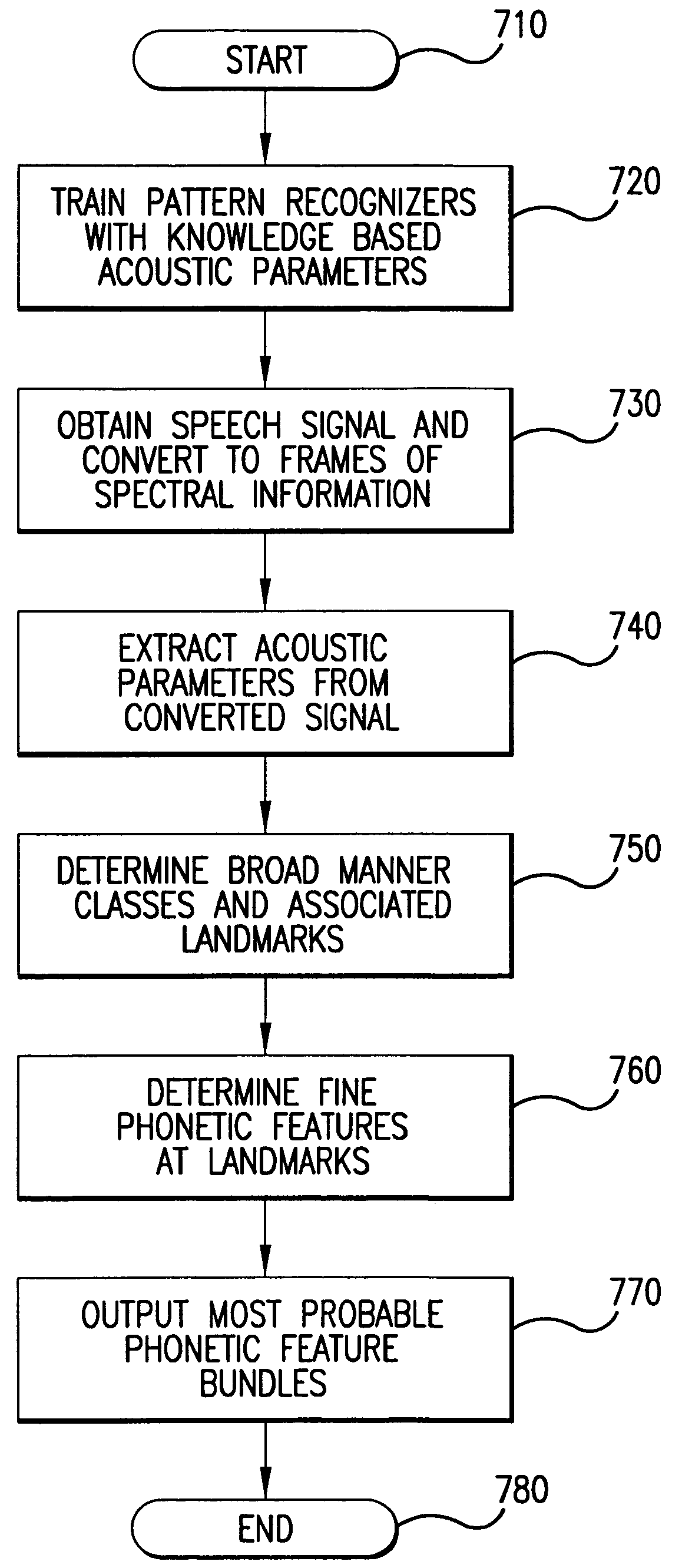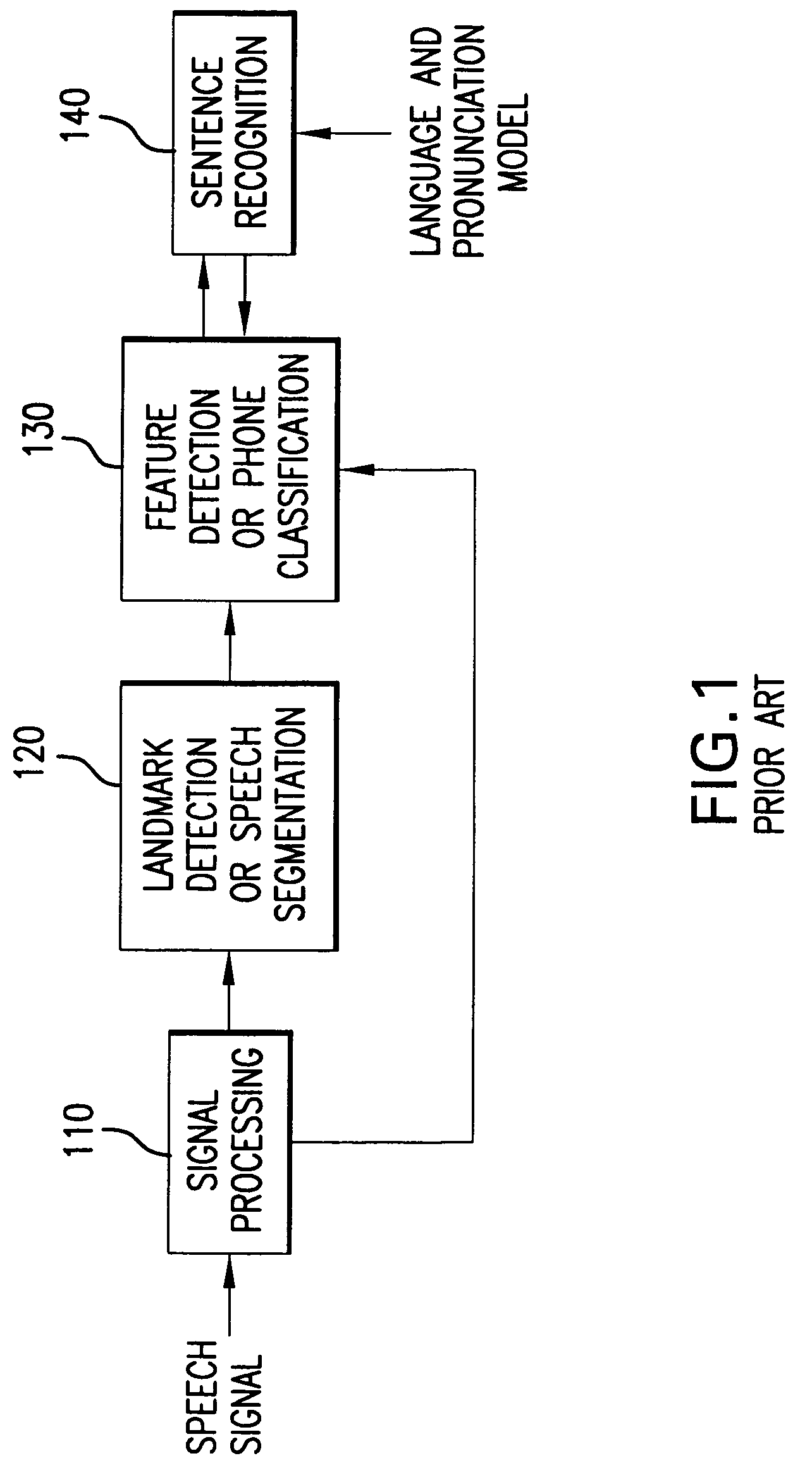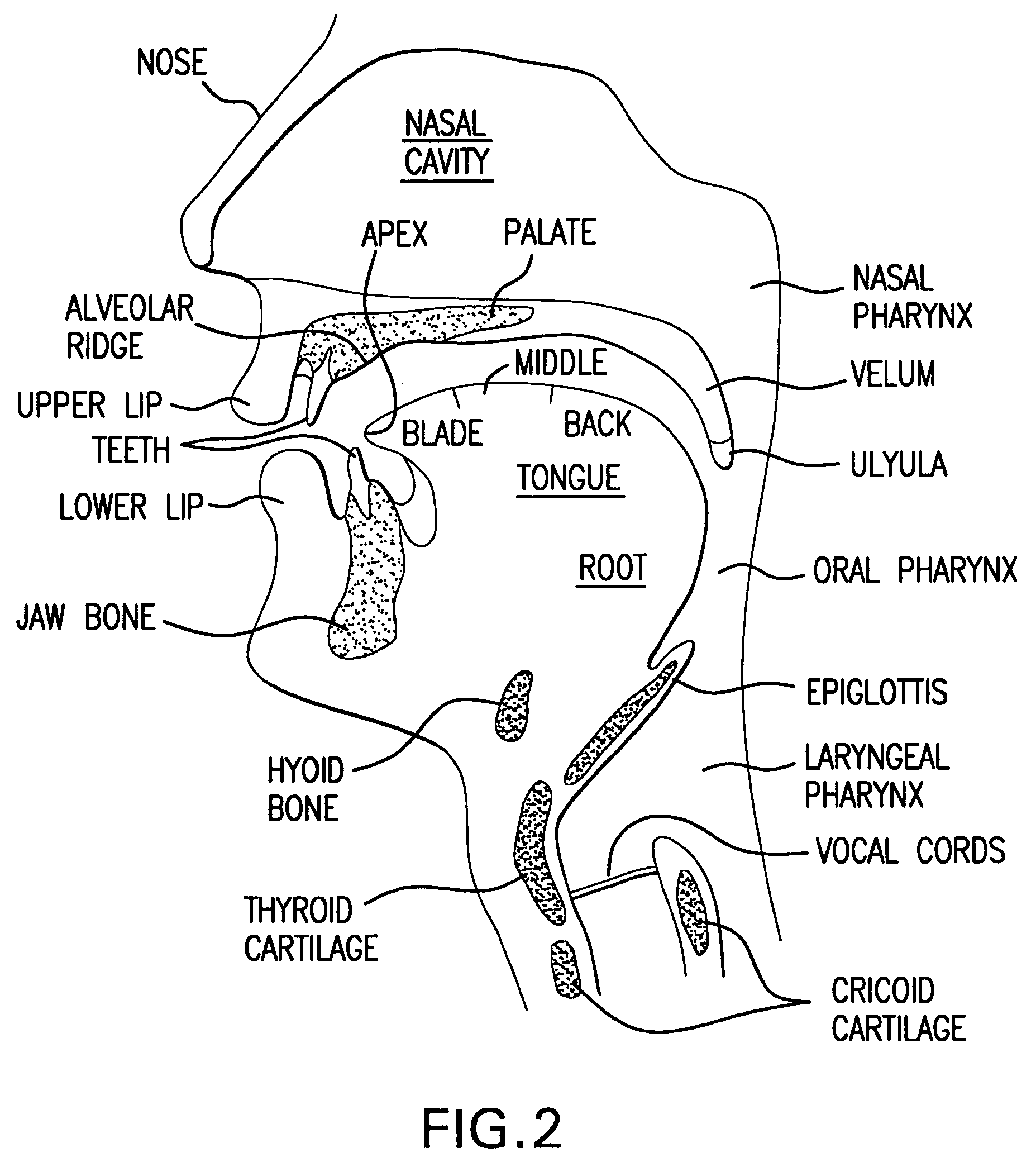System and method for automatic speech recognition from phonetic features and acoustic landmarks
a technology of automatic speech recognition and phonetic features, applied in the field of machine speech recognition, can solve the problems of little or no knowledge-based, acoustic-phonetic systems, and methods that use no explicit knowledge of the acoustic correlates of phonetic features
- Summary
- Abstract
- Description
- Claims
- Application Information
AI Technical Summary
Benefits of technology
Problems solved by technology
Method used
Image
Examples
Embodiment Construction
[0036]The present invention implements acoustic-phonetic methods for automatic speech recognition (ASR) in what will be referred to herein as the Event-Based System (EBS). The invention is based on the concept that speech sounds may be represented by bundles of phonetic features and acoustic landmarks. EBS uses knowledge-based acoustic parameters (APs) by which acoustic correlates corresponding to the manner features sonorant, syllabic and continuant are observed, to obtain multiple probabilistic landmark sequences for a speech signal. The landmarks are then used to extract fine feature acoustic correlates for other manner features such as nasal and strident, and for place and voicing features. A posteriori probabilities of words may then be determined from the probabilities of feature bundles, and the most probable feature bundle or bundles may be provided for further analysis by, for example, a lexical access process.
[0037]Phonetic features are more fundamental units of speech tha...
PUM
 Login to View More
Login to View More Abstract
Description
Claims
Application Information
 Login to View More
Login to View More - R&D
- Intellectual Property
- Life Sciences
- Materials
- Tech Scout
- Unparalleled Data Quality
- Higher Quality Content
- 60% Fewer Hallucinations
Browse by: Latest US Patents, China's latest patents, Technical Efficacy Thesaurus, Application Domain, Technology Topic, Popular Technical Reports.
© 2025 PatSnap. All rights reserved.Legal|Privacy policy|Modern Slavery Act Transparency Statement|Sitemap|About US| Contact US: help@patsnap.com



